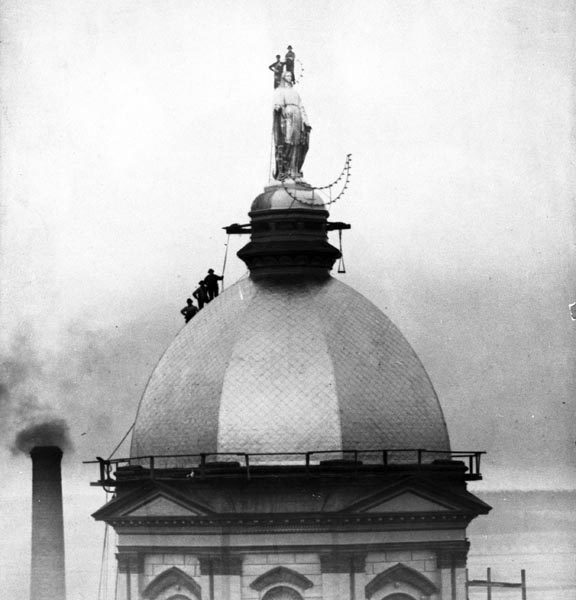
“Sophocles by the electric light seems an anachronism”
As part of the 1882 Commencement exercises, Washington Hall was formally dedicated with a theatrical performance of Œdipus Tyrannus, completely in Greek, under electrical lights. This is one of the earliest references to the use of electrical lighting at Notre Dame. [Scholastic, 07/01/1882, page 641]

By 1885, Notre Dame had made much progress in electrifying buildings on campus, well ahead of other institutions and municipalities. The South Bend Weekly Tribune praised Notre Dame for its advancements: “It will be remembered by our South Bend people that Notre Dame University was considerably ahead of South Bend in adopting a system of lighting by electricity. There is nothing too progressive for Notre Dame. She is abreast of the times in all that goes toward making her one of the finest equipped institutions in this country.” [South Bend Weekly Tribune, 11/21/1885, from PNDP 10-Zz-15]
In 1887, Professor Michael O’Dea wrote a brief history and the current of the use of incandescent lights at Notre Dame for the New York Electrical Review. O’Dea refuted Bowdoin College’s claim to be “the first college in America to be lighted by electricity,” showing that Notre Dame had already been using electrical lights for six years. Below is the reprint from Scholastic, 03/26/1887, pages 460-461:


Electric lights on campus were not only used to facilitate late-night studying, they were also used to adorn the statue of the Virgin Mary atop the Main Building Dome with a crown of twelve stars above her head and a crescent moon at her feet.

The lights were installed between 1884 and 1885, a few years after the Dome itself was completed. The crown was first illuminated on October 23, 1884, but repairs and updates occurred in 1885. Luigi Gregori designed the crescent beneath the statue, which was completed in November 1885. When all the electric lights were fully illuminated for the first time, a South Bend Weekly Tribune reporter submitted the following account:
“As seen from the city, the light on the dome appears to be a solid blaze, having the appearance of an elongated moon. The light can be seen for miles from Notre Dame, and as last night was the first time it was fully lighted up, a great many people were filled with wonderment as to what it was.” [South Bend Weekly Tribune, 11/21/1885, from PNDP 10-Zz-15]

The crown and crescent electric lights on the Dome were removed some time in the late 1920s or early 1930s, but the Dome itself is still illuminated every night. Electrical lighting is now a given, but for the students and faculty living at Notre Dame in the late 1800s, incandescent lighting was cutting-edge technology and a sharp difference from gas lighting.
Sources:
PNDP 10-Zz-15
Scholastic
GTJS 4/12
GPHR 45/6887
GNDL 38/05
